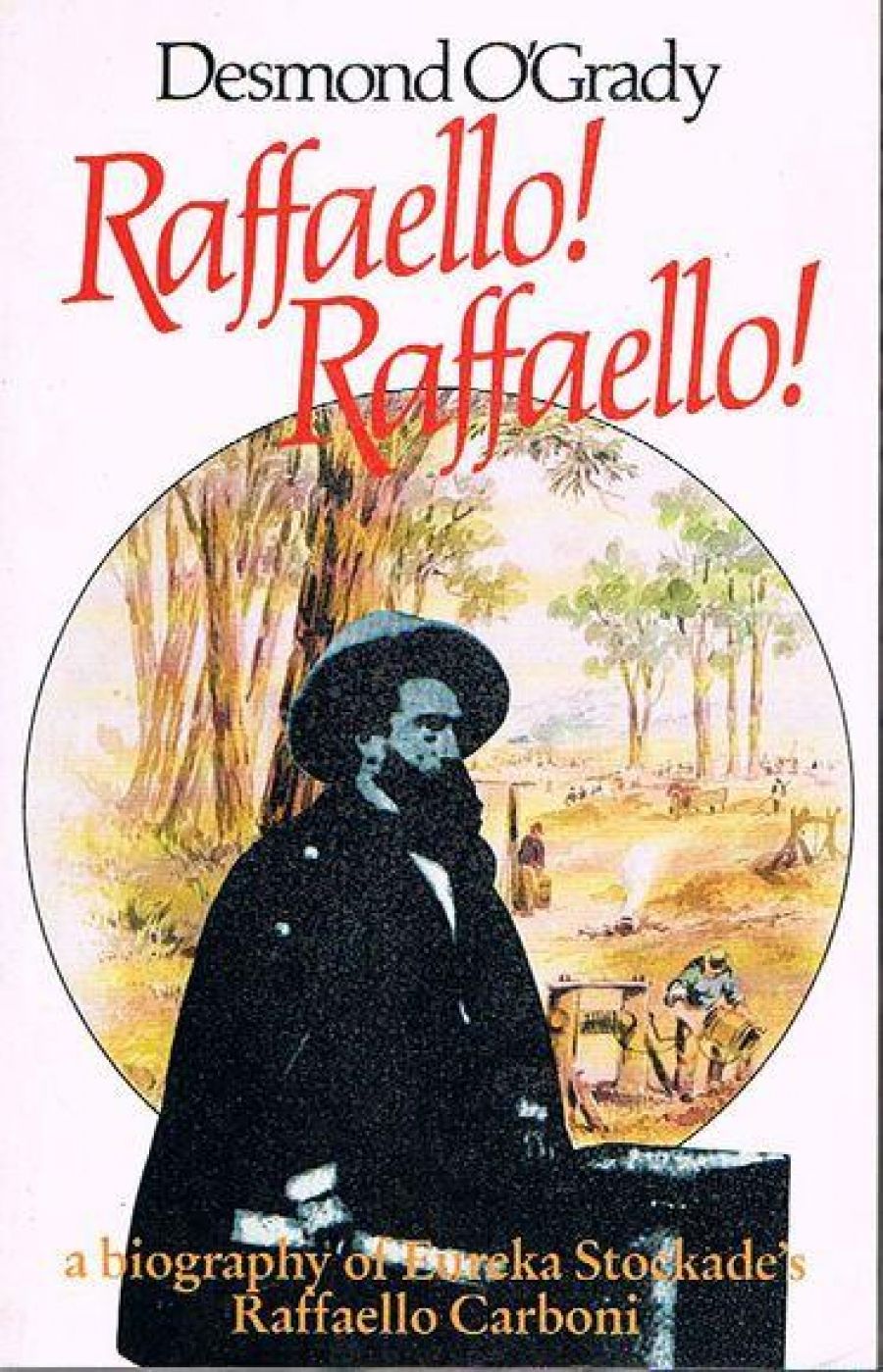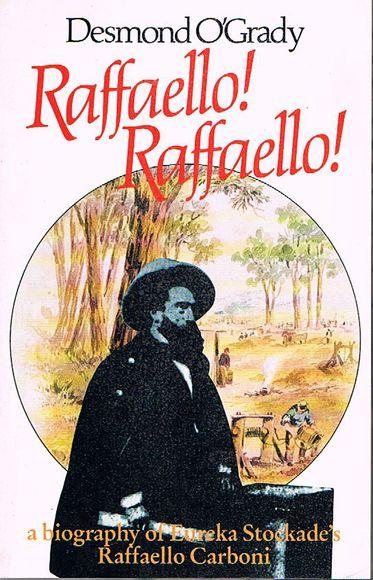
- Free Article: No
- Contents Category: Biography
- Review Article: Yes
- Article Title: Destined for Decay
- Article Subtitle: Eureka and Carboni
- Online Only: No
- Custom Highlight Text:
The Australian colonies were much more of an ethnic mix in the middle of the last century than is nowadays imagined. In 1861 one Victorian in ten was Chinese. Germans were everywhere, not just in the Barossa: 10,000 also lived in Victoria. The folk memory of such groups was not continuous enough to preserve a sense of their collective heritage. Few material traces remain: overgrown tombstones, fading foreign surnames atop country stores, an exotic farmhouse looking quite unlike its neighbours.
The vast majority of these itinerant aliens left no mark at all. They lived in a goldfields tent, rented a room in the inner city, or built a shanty amid tall timber. Within a few years they moved on, perhaps to New Zealand or the Americas, and returned home in old age. Of Italians, for instance, probably 120,000 had come to this country by the time of the Great War, but the 1921 census counted only 8,000 of them.
- Book 1 Title: Raffaello! Raffaello!
- Book 1 Subtitle: A Biography of Raffaello Carboni
- Book 1 Biblio: Hale and Iremonger, 304 pp, $29.95 hb
- Book 1 Cover Small (400 x 600):

- Book 1 Cover (800 x 1200):

Carboni has found his biographer at last, the Australian journalist-author who lives in Rome, Desmond O’Grady. The story of a global traveller could only be properly told by a writer familiar with archives and sources around the world, especially in both Italy and Australia. The sources are dispersed and also fragmentary, requiring O’Grady to contrive some long imaginary bridges across some very wide gaps. Apart from Raffaello’s sudden decision to return home, after becoming a naturalised Victorian, O’Grady’s bridgework is soundly crafted.
This is hardly surprising, given O’Grady’s depth of experience. He went to Rome in 1962 as a thirty-three-year-old freelance journalist. Over the intervening years he has probably had more influence than any other person in shaping Australian images of contemporary Italy, with widespread syndication of his stories in the Melbourne Age and the Sydney Morning Herald. He conceptualises his journalistic and creative writings quite rigorously, drawing a firm line between fact and fiction, but in his creative writing can be detected some of the interesting tensions in his own biography.
Schooled in a Melbourne Catholic environment he has an empathy with Italian church affairs but has also increasingly developed a critical distance from any dogmatic world view. The characters of his fiction often make similar journeys, moving from environments of comfortable certainty to situations of intellectual liminality. Such characters become marginalised by their own disquiet. Typically they begin within an existence bounded by certitudes; a crack appears on the edge of their consciousness; and, within a comparatively short time, their view of reality has become completely fractured. Any ability they once possessed to comprehend and describe that reality is profoundly impaired in the meantime. The demise of the O’Grady protagonist can never assume grandeur because the character is never a hero and does not suffer tragedy: instead the process is more akin to one of decay.
This is Raffaello Carboni to a tee. The bright young red-haired boy from Urbino had received an elite education, moved to Rome and got good employ in a church hostel for pilgrims. He then did the impossible: he cuckolded a priest, who in tum had him arrested as a political dissident! How could a precociously intelligent twenty-three-year-old paper over the cracks in the edifice which this incident revealed? Indeed, O’Grady’s description of the corrupt Rome of the 1840s is the highlight of this book: it deepens our understanding of Carboni’s attitudes and tactics towards the British tyrants at Ballarat. (Just like other O’Grady characters, this one was certainly not a Hero at Eureka.)
Why Carboni returned to Italy after becoming naturalised here is an unresolved problem. Perhaps in his rush to gain ‘all the rights and capacities ... of a natural born British Subject’, he failed to read the fine print ... ‘except the capacity of being a Member of either the Executive or Legislative Council’ (Act of the Governor and Council, 11 Victoria, No. 39). For a foreigner with obvious qualities of leadership this would have been galling.
O’Grady understands the decay of his protagonist. If Carboni had reconciled himself to the Italian church, to a public life in the Australian colonies, or to life as a vigneron on the banks of the Loddon, there is little doubt he would have been successful. The point is that he could not stay put, that just as he seemed to know where he was going, what he would do next, he got lost, squandered his talents, misplaced his energies and ambitions. The second half of the biography nicely illustrates this confusion. In the perplexingly confusing politics of Italian Unification, Carboni was destined for decay.


Comments powered by CComment